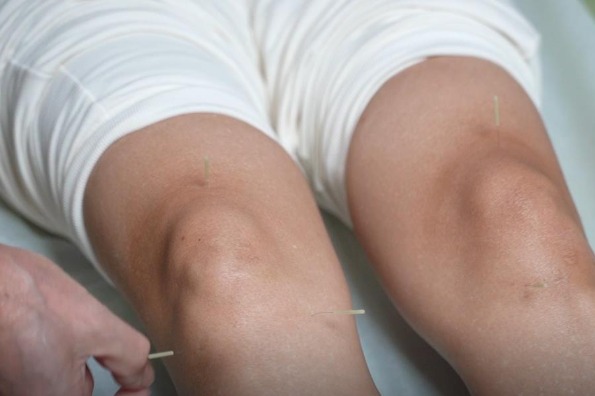Cupping

The traditional Chinese therapy of cupping includes creating a vacuum by burning a wick inside a jar and quickly placing the jar on the selected area. According to the theory of traditional Chinese medicine, the ensuing vacuum and the effect of suction helps draw out inner toxins, promotes the flow of "qi" and blood and unblocks channels called meridians, easing swelling and reducing pain.
Historical records on cupping date back to the Qin Dynasty (221-206 BC), when it was called horn therapy. It gradually developed in the Southern and Northern Dynasties (AD 420-581), was a Taoist medical practice and was widely used in the courts of Imperial China. In the Sui Dynasty (AD 581-618) and the Tang Dynasty (AD 618-907), the cupping implement was improved, and a bamboo jar replaced animal horns. In the Ming Dynasty (1368-1644), cupping had become a key treatment in traditional Chinese medicine. The present name was coined in the Qing Dynasty (1644-1911) when the jar used began to be made of pottery.
These days most acupuncturists use cups made of thick glass or plastic, although bamboo, iron and pottery cups are still used in some places. Glass cups are the preferred method, because they do not break as easily as pottery or deteriorate like bamboo, and they allow doctors to observe the skin and evaluate the effects of treatment.
There are several methods of cupping, one of them called "sustained cupping". "After the cup is sucked onto the skin, it is kept in place for about 10 minutes for an adult and three minutes for a child to induce a stagnant state of the skin, and then the cup is removed," says Zhou Peijuan, a hospital acupuncturist at the Beijing University of Chinese Medicine. "This is the most common method ... and can be used to treat many common diseases."
Another method, called movable cupping, combines two methods of treatment: cupping and scraping, Zhou says. Before cupping, a small amount of lubricant is placed on the skin, the cup is sucked onto the skin, and is forcibly slid back and forth along a selected line until a bruise is formed. The cup is then removed.
In a third method, quick cupping, the cup is sucked to the skin, immediately removed then put back again. This procedure is repeated until the treated skin turns red.
Cupping is recommended for ailments including acute colds, gastro-intestinal disorders, chronic cough and asthma, paralysis and atrophy.
Contraindications or cautions include hemophilia or bleeding disorders, inflamed skin or open wounds, fever, heart problems, and pregnancy.
Cupping is used to improve circulation and stimulate the peripheral nervous system, but deciding what the appropriate remedy should be is crucial, because cupping is not a universal remedy, Zhou says.




